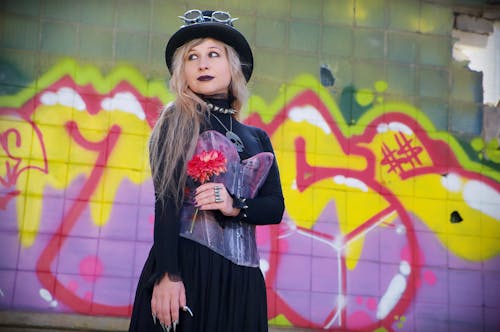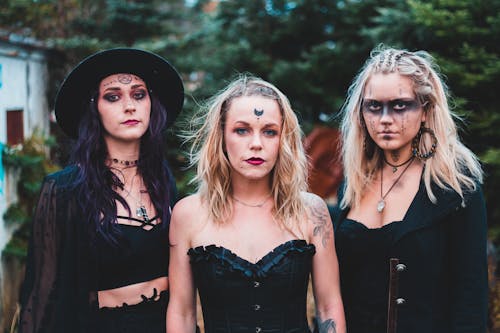
Introduction
Gothic fashion, with its distinct aesthetic of dark elegance and dramatic flair, has transcended mere clothing choices to become a powerful cultural and artistic movement. Originating in the 1980s as a subculture within the punk scene, Gothic fashion has evolved into a diverse and influential style embraced by individuals worldwide. This article delves into the rich tapestry of Gothic fashion, tracing its historical roots, exploring its key elements and subgenres, examining its influence on popular culture, and contemplating its enduring appeal in contemporary society.
Origins and Evolution of Gothic Fashion
The roots of Gothic fashion can be traced back to the late 1970s and early 1980s in the United Kingdom, where it emerged as a subculture influenced by music, literature, and artistic movements. Bands such as Siouxsie and the Banshees, Bauhaus, and The Cure played pivotal roles in shaping the Gothic aesthetic through their music, lyrics, and visual imagery. The fashion of early Goths was characterized by a blend of Victorian mourning attire, punk rock rebelliousness, and a penchant for the macabre.
As Gothic music gained popularity in underground clubs and alternative music scenes, so too did Gothic fashion evolve into a distinct subcultural identity. The adoption of dark, romanticized imagery inspired by Gothic literature, horror films, and medieval architecture became hallmarks of Gothic fashion expression.
Key Elements of Gothic Fashion
Clothing and Accessories
Gothic fashion encompasses a wide range of styles and influences, but several key elements define its aesthetic:
- Color Palette: Predominantly black, with occasional accents of deep red, purple, burgundy, or dark green.
- Fabrics: Velvet, lace, satin, and leather are favored for their luxurious textures and dramatic effect.
- Silhouettes: Emphasis on fitted or flowing garments, often with corsets, billowing sleeves, or asymmetrical cuts.
- Accessories: Spiked jewelry, chokers, ornate crucifixes, cameo brooches, and chains add to the Gothic look.
- Footwear: Platform boots, Victorian-inspired lace-up boots, and studded or embellished shoes are common choices.
Makeup and Hairstyles
Gothic makeup and hairstyles are integral to the overall aesthetic:
- Makeup: Pale foundation or powder, dark eyeliner, and bold lip colors such as deep red or black.
- Hairstyles: Long, flowing hair; teased or crimped styles; asymmetrical cuts; and elaborate updos with braids or ribbons.
Subgenres of Gothic Fashion
Gothic fashion is not monolithic but rather encompasses various subgenres that cater to different tastes and influences:
- Traditional Goth: Embraces Victorian and Edwardian influences, with emphasis on elegance and historical costume elements.
- Cyber Goth: Fuses futuristic and industrial elements with neon colors, PVC clothing, and elaborate cybernetic accessories.
- Romantic Goth: Focuses on a softer, more ethereal aesthetic with lace, ruffles, and vintage-inspired clothing.
- Punk Goth: Combines elements of punk rock fashion with Gothic sensibilities, featuring studded leather jackets, band T-shirts, and combat boots.
- Corporate Goth: Adopts Gothic fashion within professional settings, often incorporating tailored suits with Gothic accessories and subtle dark accents.
Gothic Fashion in Popular Culture
Music and Media Influence
Gothic fashion has left an indelible mark on popular culture, particularly through music, film, and literature:
- Music: Bands and musicians continue to influence Gothic fashion trends, with artists like Marilyn Manson, Evanescence, and Within Temptation incorporating Gothic aesthetics into their performances and visual imagery.
- Film: Gothic-inspired films such as “The Crow,” “Edward Scissorhands,” and “Interview with the Vampire” have showcased dark, atmospheric visuals and influenced fashion trends.
- Literature: Gothic literature classics by authors such as Edgar Allan Poe, Mary Shelley, and Bram Stoker inspire themes of darkness, mystery, and romanticism that resonate in Gothic fashion.
Fashion Icons and Influencers
Gothic fashion icons and influencers play a crucial role in shaping trends and promoting individuality within the subculture:
- Designers: Fashion designers like Alexander McQueen, Vivienne Westwood, and Ann Demeulemeester have infused Gothic elements into their collections, showcasing dark romance and avant-garde aesthetics.
- Celebrities: Celebrities and public figures, from actors to musicians, often embrace Gothic fashion for red carpet events, music videos, and personal style statements, amplifying its visibility in mainstream media.
Contemporary Trends and Future Directions
Gothic fashion continues to evolve and adapt to contemporary tastes and global influences:
- Gender Fluidity: Increasing acceptance of gender fluidity and diverse expressions of identity have broadened the scope of Gothic fashion beyond traditional binaries.
- Sustainability: Growing awareness of environmental issues has prompted a shift towards eco-friendly and ethically sourced Gothic fashion, with a focus on vintage clothing, upcycling, and sustainable practices.
- Global Community: Online platforms and social media connect Goths worldwide, fostering community support, sharing fashion inspiration, and celebrating diverse expressions of Gothic style.

Conclusion
Gothic fashion transcends trends to embody a timeless allure rooted in history, creativity, and individual expression. From its origins in the underground music scenes of the 1980s to its diverse manifestations in contemporary culture, Gothic fashion continues to captivate and inspire. Embracing themes of darkness, mystery, and romanticism, Gothic fashion empowers individuals to express their identities and aesthetics authentically.
As Gothic fashion evolves alongside societal changes and technological advancements, its influence on mainstream fashion, music, and art remains profound. By celebrating diversity, creativity, and the freedom to explore alternative aesthetics, Gothic fashion reaffirms its place as a dynamic and enduring subculture that thrives on individuality and imagination.
Through education, awareness, and appreciation of its cultural heritage, Gothic fashion continues to shape the global landscape of style, offering a sanctuary for those who embrace the beauty of darkness and the allure of the unconventional.
This article provides an extensive exploration of Gothic fashion, highlighting its origins, key elements, subgenres, cultural influences, and contemporary relevance. If there are specific aspects you would like to explore further or any adjustments needed, feel free to let me know!














